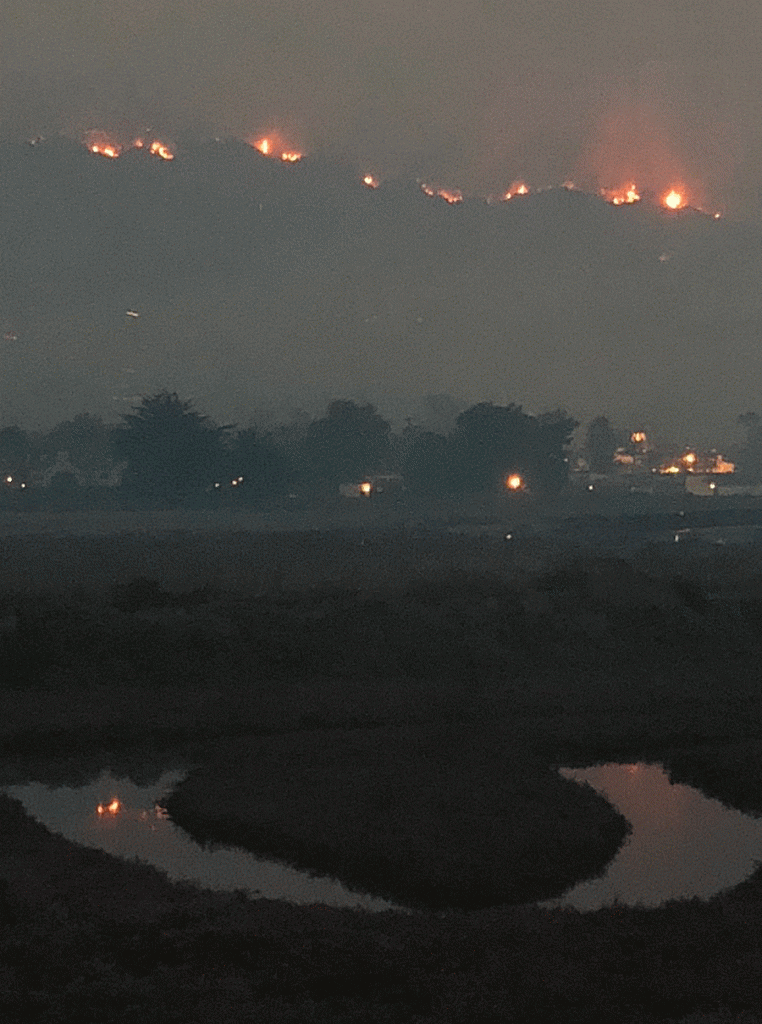
by Karen Telleen-Lawton, Noozhawk Columnist, Read the original column at Noozhawk.com
Cool stuff happens in salt marshes. Signs in the Carpinteria Salt Marsh Nature Park describe the life cycle of parasitic trematodes (eew, right?), whose function is so important that it warrants an hour-long video by UCSB and USGS’s Dr. Kevin Lafferty.

You might not observe the tiny trematodes on a trail walk, but if you’re lucky you could spot huge schools of leopard sharks as they graduate from the marsh at high tide to brave the ocean currents on their own.
If ocean waves are the heartbeat of the earth, the tidal marshes are its deep yogic breaths. Estuary channels breathe in water and nutrient-rich sea life, returning aquatic life born in the relatively safe, still nurseries of the shallow channels.
The functions of healthy wetlands are essential at many levels. They are nurseries not just for leopard sharks but halibut and countless other finfish and shellfish. Migratory birds stop by for nutrition and rest on their travels long or short. Two hundred bird species call our area salt marshes home.
This ecology benefits humans indirectly, of course, but estuaries also benefit us directly. They provide flood protection from ocean storm surges and inland creek flooding. They dilute chemical pollution from agriculture before the fouled water reaches the sea.
The National Science Foundation (NSF) and Environmental Protection Agency (EPA) fund long-term investigations of watersheds and nearshore marine environments to better understand these systems. They research the impact of pollution, effluents, and excessive nutrients on ocean species like fish and kelp.
California has lost more than 90% of its historical estuaries. The majority of California’s South and Central Coast wetlands have been filled and developed. With scarcity, restoration and protection of the remaining estuaries are critical.
Santa Barbara’s restoration projects are funded variously by local, state and federal governments, and nonprofit organizations. Sweat equity by thousands of workers, students and community volunteers have restored habitat from Prisoner’s Harbor on Santa Cruz Island to Carpinteria’ salt marsh.
The Goleta Slough Ecological Reserve is 440 acres of estuary, wetlands, scrub and grassland. Within the reserve, restoration of the 54-acre North Campus Open Space increased Santa Barbara County’s coastal wetland by 11 percent.
Restored from an Ocean Meadows golf course, it is the subject of a upcoming community film “Bringing Back our Wetland” at the Marjorie Luke Theatre on June 1.
Earlier this year, the city of Santa Barbara completed its latest restoration of the Andree Clark Bird Refuge. The 32-acre brackish lake, squeezed by residential and commercial use and incumbent chemical residue, has been problematic for decades. This time, in addition to some hardscape changes, habitat was restored with dune and salt marsh native plants.
The Land Trust for Santa Barbara completed a restoration of the Carpinteria salt marsh in 2008. In addition to replacing non-native habitat with natives, they worked on restoring tidal circulation for flood control. As with all the other projects, kick-starting with native plants and animals has allowed many other native species to flourish.
Given their role in absorbing the fluctuations of climate, salt marshes’ functions are increasingly important in the face of climate disruption.
Storm debris rushes down the creeks, clogging the marshes. Wildfires bring ash and charred logs in the next rainy season. Sea rise floods and alters the balance of life within the marsh. The Supreme Court’s just-released decision to roll back wetland protections make their recovery even more precarious.
On a typical day, wetlands may seem peaceful and tranquil, perhaps even boring to the untrained eye. But curious visitors can discern intriguing mysteries.
Agricultural runoff flows in, trematodes use snails and raccoons to their benefit, and leopard shark pups flush out to sea.
What happens in the salt marsh doesn’t stay in the salt marsh.

Karen Telleen-Lawton, Noozhawk Columnist
Karen Telleen-Lawton is an eco-writer, sharing information and insights about economics and ecology, finances and the environment. Having recently retired from financial planning and advising, she spends more time exploring the outdoors — and reading and writing about it. The opinions expressed are her own.

